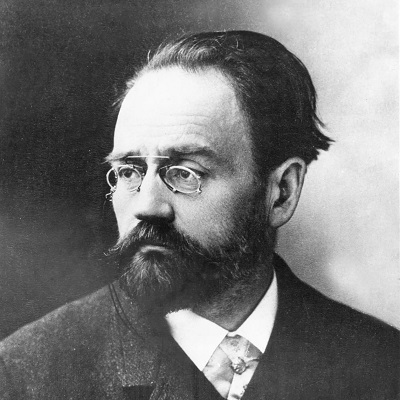Emile Zola- Biography
Page Contents
Emile Edouard Charles Antoine Zola was a renowned nineteenth-century French writer. He was the inventor and propagator of naturalism theory and pushed for France’s political liberalism. He was noted for creating powerful and lifelike main characters in his writings. His portrayal of ordinary people in his writings drew praise from all over the world. He was also a philosopher, poet, scientist, and optimist. He was an outspoken positivist. His great contribution to society during the Franco-German War is admirable.
He worked to create a society with fewer inequities and immediate justice. His open letter J’accuse landed him in hot water with the French military and administration, but he stayed firm, claiming to be a supporter of justice and righteousness. His literary contribution, a collection of 20 novellas titled ‘Les Rougon-Macquart,’ investigated the impact of alcohol, violence, and prostitution as a result of the Industrial Revolution. It became one of his most well-known literary works, giving a comprehensive picture of the Second French Empire.
Emile Zola- Birth, Age, Ethnicity, Siblings, Education
Emile Zola, born in Paris in 1840, spent the majority of his adolescence in Aix-en-Provence, in southern France. His father worked as a civil engineer on the development of a municipal water system there.
Zola received his education at the Lycee Saint-Louis in Paris. He failed the Baccalaureat exam twice, which was required in order to continue his education.
In 1862, Zola began working as a clerk for the publishing business L.-C.-F. Hachette quickly advanced to the advertising department.
Emile Zola- Relationship, Married Life, Boyfriend, Girlfriend
In 1870, Zola married Gabrielle-Alexandrine Meley, his lover of 5 years. They both looked after Zola’s mother. They lived in Zola’s villa in Medan, on the Seine River near Paris, which was also a popular meeting spot for his disciples such as Guy de Maupassant and Joris-Karl Huysmans. He was married to Alexandrine until his death, but he also had a 14-year romance with their housemaid Jeanne Rozerot. Alexandrine recognized Jeanne and Zola’s children Denise and Jacques after his death.
Zola died of carbon monoxide poisoning in 1902, which was thought to be caused by inadequate ventilation in the chimney. When Zola died, he was remembered not only as one of Europe’s most celebrated novels but also as a defender of truth and righteousness. He was honored for his role in changing society’s attitude toward the destitute and downtrodden.
In 1908, the French government moved his ashes to the Pantheon, where he was buried alongside notable French authors such as Victor Hugo, Voltaire, Rousseau, and others.
Emile Zola- Professional Career
- In addition to his job as a clerk in a publishing firm, Zola began writing essays on current events for several periodicals.
- In 1865, he published his debut novella, ‘La Confession de Claude’ (also known as Claude’s Confession in English). It was a contentious work that included harsh, semi-autobiographical elements from his past. It aroused unwarranted attention from the public, as well as from the police and his employers.
- Zola worked as a freelancer while working on his personal projects after leaving his job at the publishing organization. This is when he had two of his novels published. ‘Therese Raquin,’ published in 1867, was a terrible story about a murder and its consequences, and ‘Madeleine Ferat,’ published in 1868.
- During the 1860s and 70s, Zola was a regular at painters’ meetings, where art and its interrelationship with other theories and ideologies were vigorously discussed. In his newspaper writings, he advocated for the art of Cezanne Manet, Claude Monet, Edgar Degas, and Pierre-Auguste Renoir.
- Because of his passion for science, he attempted to write a large-scale series of novels. His project consisted of 20 Rougon-Macquart volumes. ‘La Fortune des Rougon’ was first published in a series before becoming a book in 1871. From then on, he released one novel per year, finishing the sequence of 20 novels in 1893.
- He wrote treatises to describe his naturalism movement and other art views. Among these treatises are ‘La Roman experimental’ (The Experimental Novel), published in 1880, and ‘Le Romanciers naturalists (The Naturalist Novelists), published in 1881.
- Because the novel depicted the life of a painter who ends up murdering himself, Zola’s novel ‘L’oeuvre’ (The Masterpiece), published in 1886, wrecked his friendship with Cezanne and the other painters. Cezanne identified strongly with the novel’s main character and took offense, jeopardizing their friendship.
- In 1887, he released ‘La Terre,’ a bleak depiction of peasants’ existence, which prompted a group of 5 adherents from his naturalist movement to denounce him in a statement published in La Figaro.
- He was widely criticized for his essay La Debacle, published in 1892, for its critical critique of the French army and government activities during the Franco-German war. It was rejected by the French and Germans.
Major Projects
He is best remembered for publishing his open letter ‘J’accuse’ (I accuse) in the newspaper L’Aurore in 1894, in which he accused the French general staff of wrongfully convicting a Jewish French army officer, Alfred Dreyfus, for subversion. He accused many high-ranking military commanders and the War Office of concealing the truth about Dreyfus’s monitoring in his letter.
Trivia
- Victor Hugo, the famed French writer, had Zola as a political apprentice. He backed him up in his fight against the corruption brought on by Napoleon III’s reign.
- His literary mentor and a close friend were Gustave Flaubert, a French realist writer.
- Zola’s enemies were deemed responsible for his untimely death, but nothing could be proven legally. A decade later, on his deathbed, a roofer from Paris said that he had faulty the chimney of Zola’s house for political reasons.
Also Read, Concetta Monti, Chani Natasha, and Peachprc.



